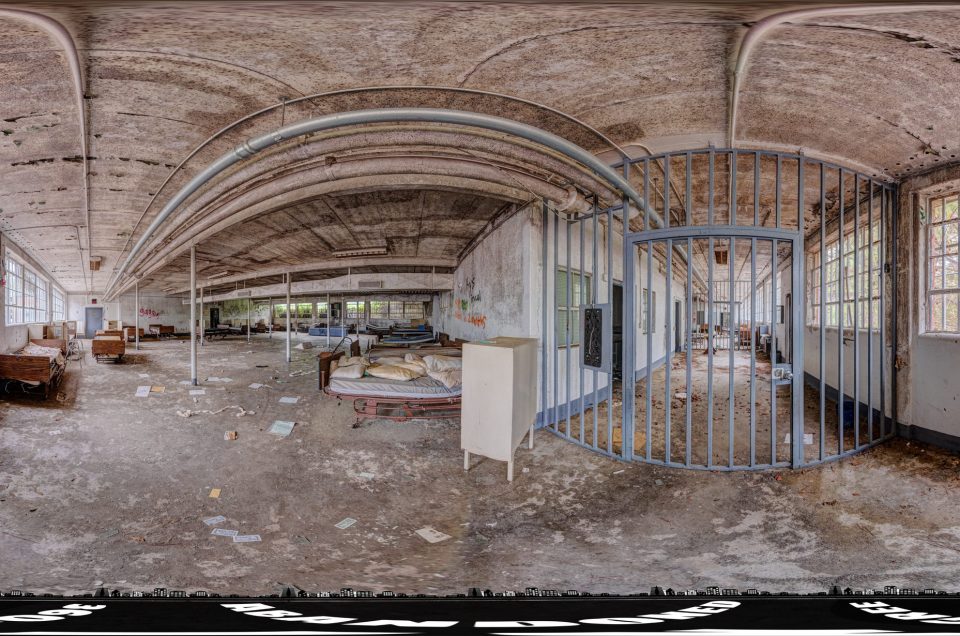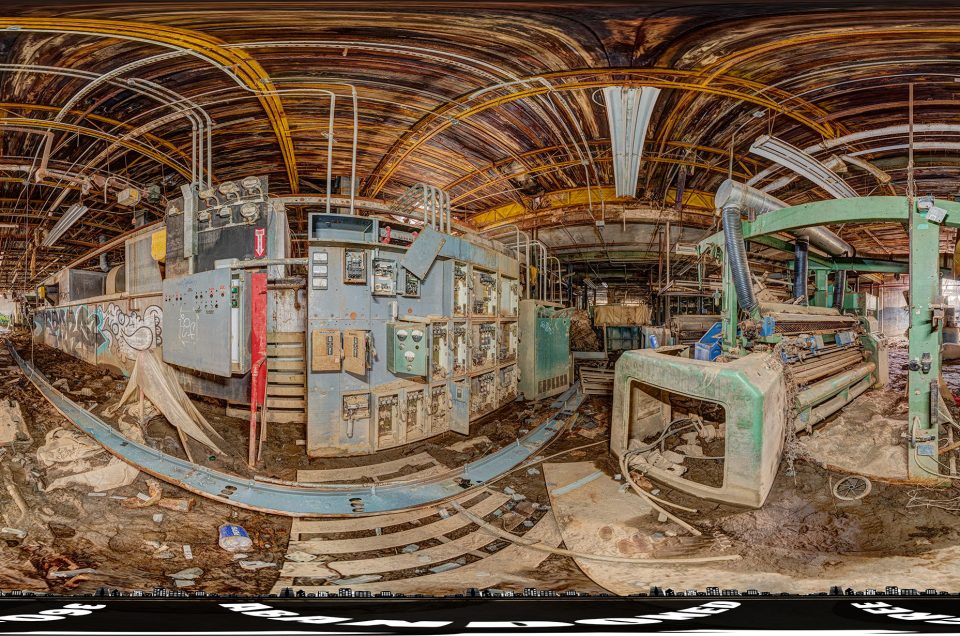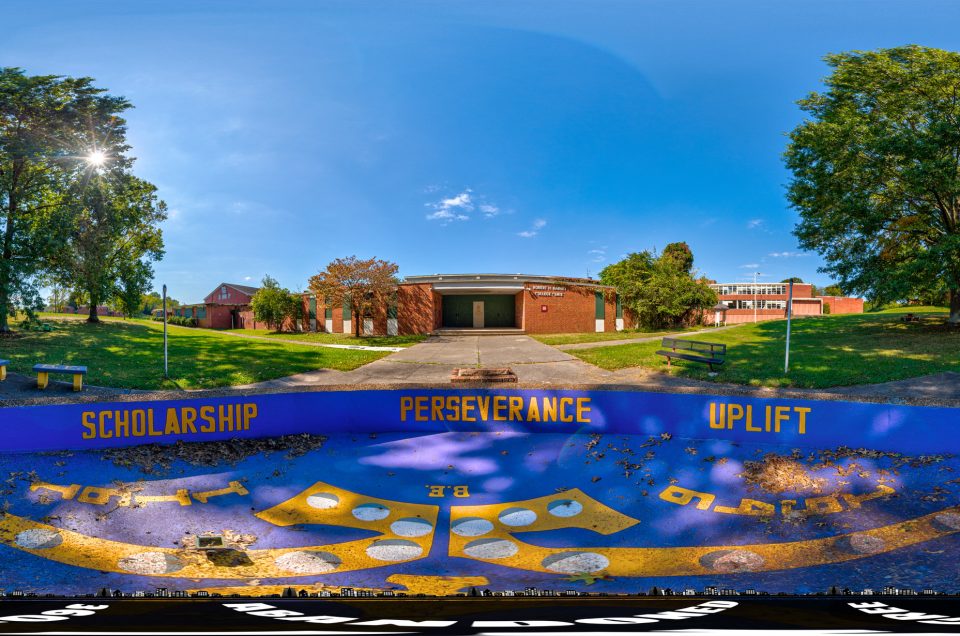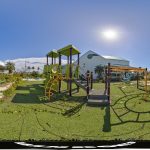Sunken City, San Pedro: The Abandoned Los Angeles Neighborhood That Fell Into the Sea
Step into the story of the Sunken City in Los Angeles, California, a coastal ruin where broken streets, toppled foundations, and graffiti-covered slabs hint at a neighborhood that literally slid toward the sea. This spot has become a magnet for urban explorers, history lovers, and photographers who appreciate places where nature and decay meet.
Take a look inside the Sunken City with the amazing 360-degree panoramic image below on Google Maps Street View to get a closer feel for the terrain, colors, and dramatic shoreline. It’s a rare chance to study one of L.A.’s most intriguing abandoned sites from all angles without setting foot on the unstable ground.
A Lost City by the Sea
Imagine a picturesque oceanfront neighborhood perched atop coastal bluffs, with charming bungalows and palm-lined streets basking in the California sun. Now picture that same neighborhood shattered and sliding into the Pacific Ocean, its remnants left abandoned and fenced off, yet beckoning adventurous souls. This is the story of Sunken City in San Pedro, Los Angeles – an abandoned enclave that literally fell into the sea. Once an upscale clifftop community in the 1920s, Sunken City’s dramatic fate has made it a legend among fans of urban exploring in California. Today, graffiti-covered ruins of streets and foundations lie tilted on the cliffs, offering both a haunting warning of nature’s power and an enticing URBEX adventure for those daring enough to visit (despite it being officially off-limits). In this comprehensive guide, we’ll journey through the rise and fall of Sunken City – including the year it was built and opened, its operating duration, original activities, reasons for its abandonment, and the historical significance that makes it an icon for urban explorers worldwide.
Born on the Bluffs: Sunken City’s Early Years
Sunken City wasn’t always a “sunken” ruin – it began as a hopeful seaside development during the roaring 1920s. Visionary developer George H. Peck carved out this little neighborhood at Point Fermin, the southern tip of San Pedro, aiming to attract well-to-do Angelenos seeking ocean views and cool breezes. Built in the early 1920s, the enclave featured about 30 to 40 upscale homes (sources cite 39 homes) perched right along the cliff’s edge, boasting some of the best, closest views of the Pacific Ocean in Los Angeles. These were luxury wood-frame houses and bungalows – a final elite development in the San Pedro hills – intended as either full-time residences or lavish vacation cottages for the fortunate few.
From the day it “opened” to residents, Sunken City had the makings of a coastal paradise. Neighbors could stroll to Point Fermin Park next door (a 37-acre clifftop park established in 1923) and enjoy the historic Point Fermin Lighthouse (built in 1874) just a short walk away. A streetcar line (the Pacific Electric “Red Car” railway) ran nearby, connecting this cliffside community with greater Los Angeles. In fact, the neighborhood’s main street, Paseo Del Mar, marked the end of the line for a tram that once ferried beachgoers and sightseers – a hint that even in its heyday Sunken City was a place people came to for scenic leisure. A small hotel called the Ocean View Inn operated on the block, welcoming visitors who wanted to stay by the sea. Residents and guests spent their days taking in panoramic ocean vistas (you can even see Catalina Island on clear days) and enjoying the tranquil ambiance of coastal California. In short, Sunken City in the 1920s was an idyllic clifftop retreat – a little slice of paradise on the Los Angeles coast.
A Brief but Bright Heyday
How long did Sunken City thrive? Its heyday was brief – essentially just a few years in the late 1920s. By the mid-1920s, the development was complete and occupied, but unbeknownst to its builders, it was living on borrowed time. For a short while, life in Sunken City was charmed. The community’s operating duration as an inhabited neighborhood lasted less than a decade: families enjoyed ocean breezes and coastal recreation, wealthy vacationers escaped the city heat in cliffside cottages, and Los Angeles grew around this tranquil enclave. The Point Fermin area was marketed as a coastal paradise, and indeed it was – until nature began to reveal a fatal flaw beneath the surface. Residents in these early years likely partook in leisurely California coastal activities – beach picnics, fishing off the rocks below, strolling the park trails, and watching the twinkling lights of ships in San Pedro Bay each evening. Little did they know that the ground beneath them was slowly, inexorably moving. Sunken City was about to earn its ominous name.
Disaster Strikes: The 1929 Landslide
In the winter of 1929, Sunken City’s story took a dramatic turn from dreamy to disastrous. It started innocently enough: on January 2, 1929, a water main pipe burst beneath the Ocean View Inn on Paseo Del Mar. Days later, a gas line under the same building also ruptured. These infrastructure failures were early red flags, hints that the ground was shifting. Soon a growing crack snaked through the area. By April 1929, after heavy rains, residents noticed parts of the street and yards dropping by several feet, and a gaping crack opened under about ten homes. Panicked homeowners voiced concerns, but at first city engineers shrugged – initial surveys showed no drastic ongoing movement, leading some to believe the worst was over. They were wrong.
That summer, on July 10, 1929, a small earthquake rattled the region, and it was the final straw that tipped Sunken City over the edge. The unstable cliffside literally began to slide toward the ocean. Geologists later described it as a massive “slump” – roughly five acres of land shearing away from the mainland. The land movement was surprisingly slow but relentless, at times measured at 11 inches per day. Imagine the surreal scene: a whole neighborhood creeping seaward inch by inch, day after day. This gradual pace gave residents a narrow window to act.
Evacuation and Collapse
As cracks widened and the ground sank, authorities ordered an evacuation of the block. Homeowners frantically packed up belongings. Astonishingly, most of the houses were saved by literally picking them up and moving them inland before the earth swallowed them. Many residents had their homes lifted off their foundations and relocated to safer lots in nearby parts of San Pedro. However, not everything could be rescued. Two houses didn’t make it out in time – these unfortunate homes slid, broken, into the Pacific, becoming ocean junk at the base of the cliffs. Parts of Point Fermin Park itself (adjacent to the homes) also collapsed into the sea during the slide. Along with the houses, Sunken City lost chunks of streets, sidewalks, and even a section of the streetcar rail line that ended at Point Fermin – all of it plunged down or left tilted at crazy angles on the shoreline.
By mid-1929, the neighborhood was effectively ruined. What had been solid ground was now a jumbled scape of shattered pavement and tilting foundations. Between January and June of 1929, the land had sunk over 7½ feet in some places, and by the end of that year the area was unrecognizable as a normal neighborhood. Locals grimly nicknamed the site “The Slide” or the “Point Fermin Landslide” in those early days. It was as if a slow-motion earthquake had permanently reshaped the landscape.
Miraculously, despite the destruction of property, no human lives were lost in the landslide – residents had evacuated in time and there are no records of any fatalities directly caused by the 1929 slide. This fact is incredible considering houses literally fell off a cliff. The disaster was a blow to wallets and dreams, but at least it didn’t directly take lives. Of course, legends of the “Sunken City” later spurred ghost stories and rumors of hauntings, but those are another matter.
Abandonment: Sunken City Becomes a Ghost Town
After 1929, what remained of Sunken City was essentially a ghost town in the making. The City of Los Angeles condemned the area; it was clear that the land was far too unstable to rebuild or inhabit. Over the next few years, crews demolished whatever wreckage was left teetering on the bluff and removed debris that could be hauled out. All but two of the houses had been relocated or razed, and those two were lost to the waves – leaving behind only their cracked foundations and a few lonely staircases to nowhere. By the early 1930s, Sunken City as a neighborhood had ceased to exist in any habitable sense.
However, the story didn’t end overnight. The land kept shifting for years. At one point, city engineers thought the slide had finally stopped – in 1935 a local engineer optimistically declared the ground stable. But Mother Nature wasn’t done. In 1940, new cracks and movement were observed; Los Angeles’s city engineer feared another major landslide was looming. Incredibly, as late as 1940 there were still a few stubborn residents living on the periphery – seven houses were reportedly still occupied on the edges of the slide zone. These may have been homes just outside the worst fissures, but it shows that some people tried to hold on. After the warnings in 1940, though, any remaining occupants finally cleared out. By the 1940s, Sunken City was completely uninhabited, and what was once a posh clifftop community had fully transformed into an abandoned ruin. The streets that hadn’t fallen were now literal dead-ends – Paseo Del Mar, for example, just stops abruptly at a cliff edge where the rest of it sheared off, a striking sight even today.
City officials had learned a hard lesson. Geologists who studied the collapse (like UCLA’s Professor William S. Miller in 1931) concluded that the cause was geological: the cliffs sat on a slippery layer of bentonite clay and tilted bedrock, a natural recipe for landslides. The combination of absorbent clay soaking in winter rains, seismic tremors, and constant wave erosion at the base of the bluff meant the location was inherently unstable. In hindsight, building an entire neighborhood there with no geological surveys was a grave mistake – one that literally sank the development. Sunken City’s abandonment thus came directly from these natural forces undermining human plans. By mid-century, maps labeled the area as a landslide zone and the notion of rebuilding was off the table. The broken neighborhood was left fenced and forgotten – for a time.
The Ruins and the Rumors
For decades after its collapse, Sunken City was mostly known only to locals in San Pedro. The site was left to the elements, a crumbling memorial to nature’s supremacy over careless development. With its concrete foundations, fragments of sidewalks, and rusted pipes sticking out of the earth, the place truly looked like a scene from a post-apocalyptic movie. In fact, locals began calling it the “Sunken City” informally, referencing the way it resembled a sunken, lost civilization. The nickname stuck, and eventually this abandoned tract gained wider attention as one of those eerie “lost” places. It’s been described as “the Atlantis of California,” a nod to the mythical city that drowned in the sea.
During the mid and late 20th century, Sunken City’s ruins became a forbidden playground of sorts. With no one officially allowed to live there, it turned into a magnet for adventurous youth and curiosity-seekers. Teenagers would sneak past “No Trespassing” signs to party amid the ruins, enjoying the coastal seclusion away from prying eyes. Surfers and fishermen knew the area too, accessing the rocky shore below for a good break or catch. Over time, graffiti artists found Sunken City to be a perfect canvas – its broken chunks of concrete and exposed retaining walls were soon covered in colorful murals and tags, adding an ironic splash of art to the desolation. By the 1970s and 80s, almost every available surface in Sunken City sported graffiti, contributing to the surreal vibe of the place (imagine waves crashing against cliffs painted with neon skulls and abstract designs).
Rumors swirled around Sunken City as well. People whispered that the ruins were haunted by those who had lost their homes – even though, as noted, no one died in the landslide, the spookiness of an abandoned neighborhood gave rise to ghost stories. Others treated it like a challenge: could you find a way in without getting caught? It became something of an urban legend spot in Los Angeles lore – a secret world of crumbling structures hidden behind a fence at the city’s edge.
Locked Away: Decades of Restricted Access
Concerned by accidents and illicit activity, the City of Los Angeles eventually took action to secure Sunken City. For many years it was just ringed by a simple chain-link fence, which locals regularly bypassed. Then, in 1987, a sturdy 8-foot-tall wrought-iron fence was installed around the perimeter in an effort to keep thrill-seekers out once and for all. The crackdown came after a string of tragic incidents – over the years, several people had fallen from the unstable cliffs and died, and occasional crime was reported in the remote zone. By the late 20th century, Sunken City had gained a bit of a reputation as dangerous and lawless: a place for late-night bonfire parties, underage drinking, and other risky behavior beyond the reach of routine police patrols. The city hoped that a taller, stronger fence and clear warnings would finally put a lid on trespassing.
“No Trespassing” signs now adorn the fences, threatening hefty penalties. In fact, authorities established fines up to $1,000 for trespassers caught in Sunken City. Park rangers, LAPD, and even Port Police have conducted sweeps to catch people sneaking in, issuing $400–$500 citations regularly. The message is clear: Sunken City is officially closed to the public. This closure isn’t just red tape; it’s also for safety. The ground in and around Sunken City is still unstable even today, with occasional shifts and new cracks appearing after heavy rains or tremors. As recently as 2011, a nearby section of coastal road collapsed in a landslide, underscoring the ongoing geologic volatility of the area. Loose rocks, sudden drop-offs, and crumbling chunks of concrete make it legitimately hazardous if you don’t watch your step.
Despite all these measures, Sunken City continues to attract explorers. The forbidden nature of the site almost adds to its allure. A determined visitor will find that locals have dug a small hole under the fence in one corner, or gaps where one can carefully climb around the barrier – pathways that many adventure-seekers have used to gain entry. It’s not unusual to see curious people coming and going, especially on weekends, even though they are technically breaking the law. Over the years, Sunken City has thus remained an open secret: it’s closed, but not truly off-limits if you’re willing to bend the rules (with the understanding that you risk fines or injury).
Urban Exploration Paradise (and Perils)
In the 21st century, Sunken City has become something of a legend in urban exploration circles. Fans of URBEX (urban exploring) are drawn to this spot because it’s a perfect cocktail of elements: abandoned structures, graffiti art, a dramatic natural setting, and a dash of danger and illegality to spice it up. Countless travel blogs, YouTube videos, and social media posts feature daring visits to Sunken City. For those interested in urban exploring in California, Sunken City is often a bucket-list location – spoken of in the same breath as abandoned hospitals, ghost towns, or decommissioned military sites, yet it’s unique because it’s essentially an abandoned neighborhood in the middle of greater LA.
What do explorers find when they get there? A scene out of an adventure film: massive slabs of broken asphalt and concrete sloping toward the ocean, covered in colorful graffiti murals; twisted rebar and old pipelines jutting from the earth at odd angles; remnants of staircases leading to nowhere; and nature steadily reclaiming the area with wild vegetation crawling over rubble. All around, the views are stunning – you stand on cliffs above the Pacific, with waves crashing on the rocky shore below and Catalina Island visible on the horizon on clear days. Palm trees still line parts of the clifftop, giving the site an oddly tropical, serene feel even among the decay. Many visitors describe an eerie peacefulness: without the crowds of a normal park, Sunken City can feel like your own secret world, with only the sound of surf and seagulls to accompany the bright graffiti artwork and the ruins at your feet.
Of course, there are real risks. The cliffs at Sunken City are roughly 100 feet high in places – a fall could be fatal, and sadly, accidental falls have happened over the years. The ground can be slippery, especially after rain, and new fissures can appear without warning. Additionally, because it’s an illegal trespass to be inside, anyone exploring has to be cautious of law enforcement or annoyed neighbors. Locals have been known to call police on noisy trespassers, and being caught can result in a pricey citation. For these reasons, many urban explorers who visit do so discreetly and during daylight, taking care to respect the site (some treat it almost like visiting a historic ruin – which, in effect, it is).
Yet despite the warnings, the allure remains strong. On any given sunny day, you might find a handful of explorers, photographers, or graffiti artists inside Sunken City. They’re drawn by the freedom to create art or to simply experience a rare piece of Los Angeles history firsthand. Graffiti artists especially have left their mark – Sunken City’s concrete canvases are covered with everything from elaborate murals and characters to the scrawled names of travelers from around the world. This has turned the site into an informal open-air art gallery of street art, constantly changing as new artists paint over old. It’s one reason many explorers return multiple times – you never know what new art or message might appear on the rocks.
To paint a picture of the community around Sunken City today: you’ll encounter an eclectic mix of people if you venture in. There might be a group of local teens hanging out and listening to music, a couple of adventurous tourists snapping photos, a surfer climbing up the cliff trail after catching waves, and maybe an older San Pedro resident who hopped the fence just to enjoy the view in peace. It’s a melting pot of the curious and the bold. As one visitor described, “Sometimes you see dolphins and whales out here, for free. And young kids come here, they drink and do bonfires…” It’s a place where on one hand people come to relax, play guitar, or picnic at sunset, yet on the other hand it can turn rowdy at night with illicit parties. This dynamic has caused friction with the neighbors whose homes border the site. They complain of noise, litter, and occasional vandalism from Sunken City trespassers, describing it as a “lawless area” after dark. These contrasting uses – peaceful retreat vs. party spot – are part of Sunken City’s complex modern identity.
Historical Significance and Legacy
Beyond its value to urban explorers, Sunken City holds a broader historical significance. It stands as a stark cautionary tale for coastal development. Nearly a century later, California is still grappling with coastal erosion and unstable geology in many communities, especially with climate change accelerating sea-level rise and extreme weather. Sunken City’s fate is frequently cited by geologists and urban planners as a lesson in respecting the natural landscape. Building luxury homes on a cliff composed of soft clay and inclined bedrock, without proper geological studies, was courting disaster – and disaster indeed struck. Modern developers and city officials look at Sunken City and are reminded that nature bats last. For coastal communities around the world, it’s a vivid example that the ocean will reclaim what is built too close to the edge if the ground is not solid. In fact, the El Camino College geology field trips use Sunken City as a case study when teaching about landslides and the Palos Verdes geology, underlining its value as a real-world example of a “slump” landslide.
Sunken City also carries cultural resonance in Los Angeles lore. Over the years it has appeared in popular culture, cementing its status as an intriguing landmark. For instance, the cult-classic film The Big Lebowski (1998) filmed its famous scene of scattering Donny’s ashes on a bluff – that was shot at Sunken City’s cliffs, immortalizing the spot on screen. The site was also featured in the TV series Fear the Walking Dead (Season 1 finale, 2015) as a dramatic post-apocalyptic backdrop. Music fans may know that punk band Joyce Manor referenced Sunken City in a song lyric (“Sunken City by the ocean…”). These references show how Sunken City, though off-limits, has captured the imagination enough to become an iconic abandoned place in California.
In the local community, Sunken City has sparked ongoing debates and even activism. Groups like Sunken City Watch have lobbied the city to reopen the site as an official park or historical landmark, arguing that it’s been stable for decades now and could be enjoyed safely with some precautions. Notable figures, including Oscar-winning director Martin Scorsese, have even voiced support for opening Sunken City to the public during daylight hours. Proposed plans have included installing gates that lock at night, adding railings and signage, and treating it like a coastal nature trail where people can legally walk among the ruins. Supporters say it would reduce the risky sneaking-in and allow everyone to appreciate the site’s beauty and history without breaking the law. On the flip side, many locals remain opposed, fearing that making Sunken City “official” would lead to more traffic, trash, and liability issues (given the past accidents). As of now in 2025, the site remains officially closed, and the debate continues. But regardless of its legal status, Sunken City’s legend lives on – curious visitors from around the world still venture there, and it regularly features in articles about “must-see secret spots” in Los Angeles.
Key Facts About Sunken City
-
A 1920s Seaside Neighborhood: Sunken City was originally developed in the 1920s by George H. Peck as an exclusive clifftop community of about 30–40 homes with gorgeous Pacific Ocean views. It was a prestigious address and a favorite vacation haven for wealthy Los Angeles residents in its brief prime.
-
Built, Then Broken: The neighborhood’s life was short-lived – within just a few years of being built, the land began to fail. In 1929 a landslide struck, caused by unstable geology (waterlogged clay and quakes) which sent roughly 5 acres of land slipping into the sea. At the peak of the disaster the ground was moving about 11 inches per day!
-
Houses Relocated in Time: Thanks to the slow pace of the slide, most residents saved their homes by moving them before the collapse. However, two houses fell into the ocean during the 1929 landslide, along with parts of streets, sidewalks, and even a section of the local streetcar line. Point Fermin Park also lost a chunk of land. Miraculously, there were no casualties in the slide itself.
-
Abandoned and Off-Limits: After the early 1930s, Sunken City was entirely abandoned. The site has remained fenced-off for nearly a century now, with public access officially forbidden. In 1987 Los Angeles erected a robust iron fence around the 6-acre area due to frequent trespassing, injuries, and even fatalities from falls on the cliffs. Trespassers today face fines up to $1000 if caught, and “No Trespassing” signs are posted everywhere.
-
Urban Explorer Magnet: Despite being off-limits, Sunken City is one of the most famous abandoned places in California for urban explorers. Its surreal landscape of broken ruins covered in graffiti, combined with stunning ocean views, attracts visitors who sneak in to take photos, create art, or just experience the unique atmosphere. The site has a 4.5/5 rating on TripAdvisor, even though visiting is technically illegal! Adventurous souls from across the globe include Sunken City on their URBEX itineraries when visiting L.A.
-
Cultural Landmark: Sunken City’s mystique has seeped into popular culture. It earned the nickname “Atlantis of California” because so much of the neighborhood literally sank into the Pacific. The location has been used in films (like The Big Lebowski and National Security) and TV (such as Fear the Walking Dead), usually to portray dramatic coastal ruins. Its story is frequently cited in discussions about coastal erosion and serves as a cautionary example for geologists and city planners.
Visiting Sunken City: Adventure with Caution
To a global audience of intrepid travelers: if Sunken City has captured your imagination, you’re not alone. However, remember that this site is officially closed – anyone who decides to explore does so at their own risk. The appeal of Sunken City is undeniable: it offers a mix of history, adventure, and scenic beauty that’s hard to match. Standing on those broken remnants with the salt breeze in your face, you can’t help but feel a connection to the past – imagining the laughter of 1920s families whose yards are now 50 feet below where you stand. It’s the thrill of touching a moment in history frozen in time, combined with the adrenaline of bending the rules for a peek at a hidden world.
If you do go (again, not that we’re encouraging trespass!), be extremely careful. Wear good shoes for traction on dusty or uneven surfaces. It’s wise to go in daytime; the cliffs are dangerous enough without darkness, and rogue waves or crumbling edges are constant hazards. And absolutely do not get too close to the cliff edges – they can give way without warning. Many an unwary photographer has backed up a little too far for a perfect shot, only to encounter a very imperfect drop. Local urban explorers also advise going in small groups and keeping a low profile to avoid disturbing the neighborhood (and attracting the police). Essentially: explore, but respect – respect the laws, the local residents, and the power of nature that created Sunken City in the first place.
Conclusion: Sunken City’s Enduring Allure
Sunken City is a place where adventure and history meet. From its origins as a luxurious 1920s clifftop retreat to its collapse into a rubble-strewn cautionary tale, this abandoned neighborhood has a story that continues to fascinate people around the world. It’s a reminder that even in a modern metropolis like Los Angeles, there are lost secret places with untamed beauty and mystery. For urban explorers, Sunken City offers that irresistible blend of beauty and decay, law and defiance, past and present. Standing among the graffiti-painted ruins with the ocean stretching to the horizon, one can’t help feeling a sense of awe – both at what human ambition created, and what nature ultimately reclaimed.
Though it has been closed off for decades, Sunken City refuses to fade away quietly. Its legend lives on in guidebooks, travel forums, and the whispered plans of explorers seeking something beyond the ordinary tourist trail. Whether it eventually becomes an official park or remains an illicit adventure spot, Sunken City will always symbolize the intersection of California’s coastal dream and its wild reality. It’s a place where streets end in sea cliffs, where the ghosts of a neighborhood mingle with spray-painted art and seabirds. In the end, Sunken City invites us to marvel at how quickly fortunes can turn – one day a trendy address, the next an underwater graveyard – and to appreciate the delicate balance between human endeavors and the forces of nature. For the global urban explorer or history buff, Sunken City is more than an abandoned site; it’s an unforgettable chapter of Los Angeles history written in cracked pavement and ocean spray, waiting to be discovered anew by each person who hears its call.
If you liked this blog post, you might be interested in learning about the Puerto Ferro Lighthouse in Puerto Rico, the Palmdale House in Florida or the Baltimore Valve House in Maryland.
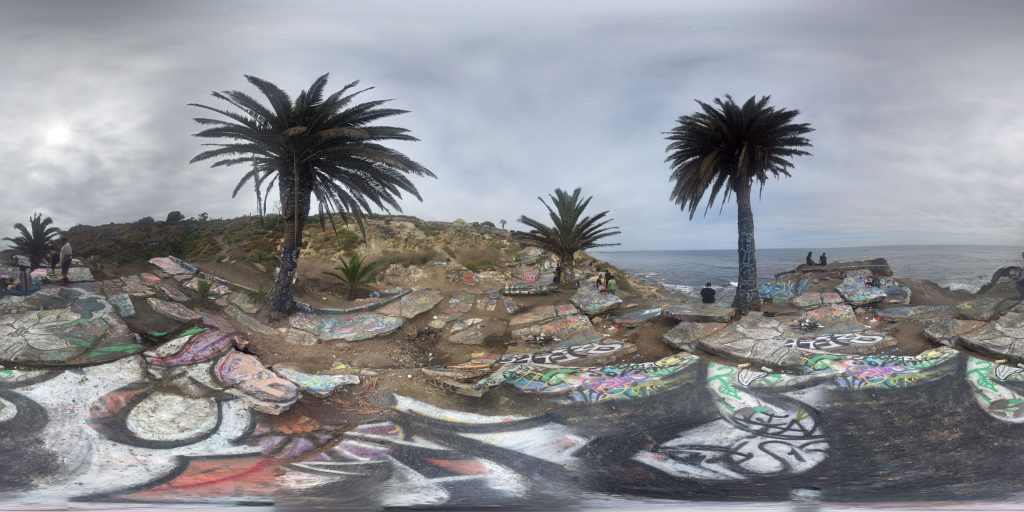
A 360-degree photosphere captured at the Sunken City in Los Angeles, California. Photo by: 29 KINGS
Welcome to a world of exploration and intrigue at Abandoned in 360, where adventure awaits with our exclusive membership options. Dive into the mysteries of forgotten places with our Gold Membership, offering access to GPS coordinates to thousands of abandoned locations worldwide. For those seeking a deeper immersion, our Platinum Membership goes beyond the map, providing members with exclusive photos and captivating 3D virtual walkthroughs of these remarkable sites. Discover hidden histories and untold stories as we continually expand our map with new locations each month. Embark on your journey today and uncover the secrets of the past like never before. Join us and start exploring with Abandoned in 360.
Do you have 360-degree panoramic images captured in an abandoned location? Send your images to Abandonedin360@gmail.com. If you choose to go out and do some urban exploring in your town, here are some safety tips before you head out on your Urbex adventure. If you want to start shooting 360-degree panoramic images, you might want to look onto one-click 360-degree action cameras.
Click on a state below and explore the top abandoned places for urban exploring in that state.
